Hebei Medical University is a key university in Hebei Province. It was originally named Beiyang Medical School. It was founded in Tianjin in 1894 by Li Hongzhang, the Governor-General of Zhili and Minister of Beiyang. It is the first government-run western medical school in modern China. After the Revolution of 1911, on January 19, 1912, the Ministry of Education of the National Government issued the "General Order on the Provisional Measures for General Education", and Beiyang Medical School was changed to Beiyang Medical School. On October 22, 1912, the Ministry of Education of the National Government issued the "Sixteenth Order of Specialized Schools", according to which in September 1913 (the second year of the Republic of China), Beiyang Medical School was renamed Zhili Public Medical Specialized School and began to recruit undergraduate students. In 1915, the school moved to Baoding. On July 7, 1937, the Anti-Japanese War broke out in full swing, and the school was forced to close. In January 1946, the school resumed enrollment. In April 1949, it was renamed Hebei Medical College. In 1958, the school moved from Baoding to Shijiazhuang. In 1995, the former Hebei Medical College, Hebei University of Traditional Chinese Medicine and Shijiazhuang Medical College merged into Hebei Medical University. In 2013, Hebei University of Traditional Chinese Medicine resumed its independent system. In 2016, the Ministry of Education, the National Health Commission and the People's Government of Hebei Province formally signed an agreement to jointly build Hebei Medical University. During the "Thirteenth Five-Year Plan", the school set the development goal of "building a high-level medical university with distinctive characteristics". The school adheres to the fine school spirit of "respecting morality, dedication, rigor and innovation". After 129 years, especially the construction and development of more than 40 years of reform and opening up, it has become a comprehensive medical university integrating teaching, scientific research and medical care. In 2005, the school proposed the school motto of "Mingde, erudition, action, wisdom and circle". In 2015, the school established the school-running philosophy of "student-oriented and teacher-oriented". At present, the school has two campuses, five directly affiliated hospitals, 19 secondary colleges, and 28 undergraduate majors, including 4 national specialty majors and 4 provincial specialty majors. 15 majors have been selected as national first-class undergraduate major construction sites, and 12 majors have been selected as provincial first-class undergraduate major construction sites. There are currently 19,787 full-time students, including 6,309 doctoral and master's students and 418 international students. The school has established 6 postdoctoral research stations in basic medicine, clinical medicine, integrated Chinese and Western medicine, biology, pharmacy, public health and preventive medicine. It has 6 first-level disciplines authorized to confer doctoral degrees and 47 second-level disciplines authorized to confer doctoral degrees; it has 9 first-level disciplines authorized to confer master's degrees and 51 second-level disciplines authorized to confer master's degrees; there is 1 doctoral professional degree authorization category and 4 master's professional degree authorization categories. The degree authorization disciplines have covered biology, basic medicine, clinical medicine, public health and preventive medicine, integrated Chinese and Western medicine, pharmacy, etc. The school has a complete medical education system for cultivating bachelors, masters and doctors. The school system has a total of more than 17,000 faculty and staff (including directly affiliated hospitals), including 1,180 senior professional and technical personnel, 1,813 associate senior professional and technical personnel, 363 doctoral supervisors, and 2,450 master's supervisors. In this team, there are a group of experts and professors with profound knowledge and high reputation at home and abroad, including 4 academicians of the Chinese Academy of Engineering, 1 winner of the National Outstanding Young Scientist Fund, 3 Yangtze River Scholars, 1 National Outstanding Professional and Technical Talent, 2 people selected for the National Special Support Program for High-level Talents ("Ten Thousand Talents Program"), 7 people selected for the National Hundred, Thousand and Ten Thousand Talents Project, 46 experts enjoying special government allowances from the State Council, 1 national inspector, 5 national model (excellent) teachers, 1 young and middle-aged science and technology innovation leader in the Innovation Talent Promotion Program of the Ministry of Science and Technology, 3 Yanzhao Scholars, 9 high-end talents in Hebei Province, 42 provincial outstanding experts, 73 young and middle-aged experts with outstanding contributions, 29 experts receiving special allowances from the Hebei Provincial Government, 20 famous teachers of Hebei higher education institutions, 2 people selected for the Hebei Province "Hundred Talents Program", 14 people selected for the first level of the "Three Three Three Talent Project", and 27 model (excellent) teachers in Hebei Province. The school has 5 directly affiliated hospitals, namely the First Hospital, the Second Hospital, the Third Hospital, the Fourth Hospital and the Stomatological Hospital of Hebei Medical University, of which 4 are Grade 3A comprehensive hospitals and 1 is a Grade 3 specialized hospital with 9,252 beds. According to the training objectives of various majors in the school, the school has built a total of 52 off-campus internship and training bases to undertake the teaching tasks of internships and training for various undergraduate majors in the school. The school is not only a medical education and medical treatment center in Hebei Province, but also a medical research center in Hebei Province. There are 1 national key discipline (Basics of Integrated Traditional Chinese and Western Medicine), 1 national key cultivation discipline (Forensic Medicine), 1 key discipline of the State Administration of Traditional Chinese Medicine (Basics of Integrated Traditional Chinese and Western Medicine), 16 national key clinical specialties, 4 "Double First-Class" construction disciplines in Hebei Province, 1 discipline supported by the National Key Discipline Cultivation Project in Hebei Province, 4 strong and characteristic disciplines in Hebei Province, and 12 key disciplines in Hebei Province. Up to now, our school has built 1 national innovative talent training demonstration base, 1 key laboratory of the National Health Commission, 2 provincial and ministerial key laboratories (Ministry of Education), 1 Ministry of Education Technology Innovation Center, 4 provincial collaborative innovation centers, 1 provincial new think tank, 1 provincial philosophy and social science research base, 3 key research bases of humanities and social sciences of the Provincial Department of Education, 5 engineering research centers (engineering laboratories) of the Hebei Provincial Development and Reform Commission, 1 provincial engineering center, 35 key laboratories of Hebei Province, 4 provincial traditional Chinese medicine research rooms, 4 provincial technology innovation centers, 1 provincial international cooperation research platform, 16 provincial clinical medicine research centers, and 3 Hebei Science Demonstration Bases. The school was rated as the "National Science Education Base" from 2021 to 2025, and was approved as the first batch of "big ideological and political courses" practical teaching bases in the country. It was rated as the demonstration unit of Hebei Provincial Citizen Science Literacy Education in 2021. In addition, the school has also hosted and edited and published 8 national and provincial academic journals. In recent years, the school has continuously strengthened international exchanges and cooperation and has become an important window for Hebei Province's foreign cultural and academic exchanges. It has established close cooperative relations with 33 medical schools and research institutions in 12 countries including Japan, South Korea, the United States, Belgium, Russia, Ireland, and the United Kingdom, hired more than 100 foreign experts to serve as honorary positions in the school, and has 418 international students studying at the school.
-

Tsinghua University
-

Peking University
-

Fudan University
-

Wuhan University
-

Zhejiang University
-

Nanjing University
-

Sun Yat-sen University
-

Tongji University
-

Renmin University of China
-

Jahrom University of Medical Sciences
-

Technological Institute of Tlaxcala Plateau
-

Golfo University
-

Technological University of South Sonora
-

Technological University of Huejotzingo
-

Tizimín Institute of Technology
-

Chilpancingo Institute of Technology
-

Technological Institute of Boca del Rio
-
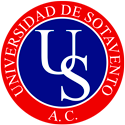
University of Sotavento
-
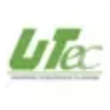
Technological University of Tulancingo
-
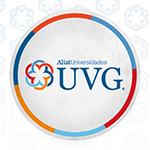
Valle del Grijalva University
-

Technological University of Nezahualcoyotl
-
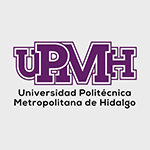
Metropolitan Polytechnic University of Hidalgo
-
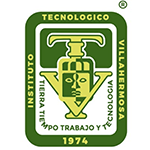
Villahermosa Institute of Technology
-
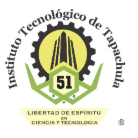
Instituto Tecnologico de Tapachula
-
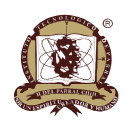
Technological Institute of Parral

